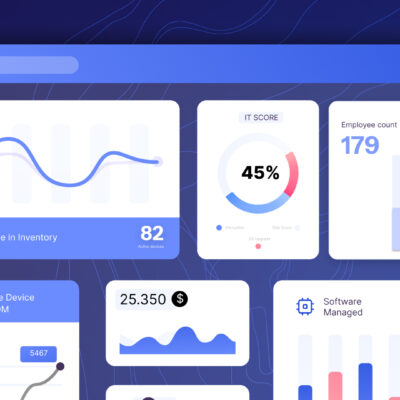Smooth Transitions: How Automation Revolutionises Employee Offboarding
“Hey, I am quitting.”
“Alright, goodbye!”
An employee leaving your organisation is never this simple.
No matter how an organisation operates, and what mode of work they follow, the employee offboarding process has to be flawless. Because, when an employee steps down, an organisation is at risk of data loss, reputational issues and transition challenges. It is crucial to have an effective and streamlined process to ensure that the company’s data is secure, devices are retrieved, knowledge transfer is complete and the departing employee is happy. That’s a lot of things to do manually.
What is Offboarding?
Before we dive into the action, let’s understand what onboarding is all about. Offboarding is not just an exit process. It is a grand process consisting of the following:
- systematically transferring the departing employee’s responsibilities, knowledge, goals and vision to the replacement.
- ensuring a smooth transition for everyone and all the teams involved.
- enabling the departing employee with everything they need for a happy farewell – right documentation, payroll calculations, full and final settlement, etc.
- retrieving devices and securing data effortlessly.
Offboarding Process: Major Steps
Here are the key steps involved in an ideal offboarding process:

An Effective Offboarding: Why is it So Important?
Why bother with offboarding, you may wonder? Well, there are plenty of benefits a streamlined and effective offboarding can offer. Let’s look at a few.
- Enhancing reputation: Smooth offboarding creates a long-lasting impression on the departing employee. Do not forget, words spread like wildfire and your former employees are your no. 1 ambassadors. It’s your call how you want to send them off. Plus, you want your potential recruits to know that you treat your employees with respect and gratitude, even when they are leaving.
- Employee retention: Believe it or not, effective onboarding can contribute to employee retention. When departing employees feel respected and appreciated during their farewell, they are more likely to speak positively about their experience, which can fetch you the “good employer” badge.
- Positive company culture: When your team sees how well you are offboarding an exiting employee, they would definitely feel positive about the culture. This would help improve employee morale and you have a happy workforce!
- Knowledge transfer: Offboarding offers a valuable opportunity to capture and transfer critical knowledge from departing employees to their successors. This helps maintain business continuity and prevents a sea of confusion.
- Maintaining good relationships: A departed employee is always a potential employee. Through a great onboarding process, you are establishing a positive relationship with the employee. With that, they might want to come back or refer someone from their network, who knows?
- Preventing security issues: You want to ensure your company’s devices and data are secure, right? Through an efficient offboarding process, you can protect your data and assets from unauthorised access and data breaches.
The Challenges of Manual Offboarding
Now, let’s talk about the challenges organisations face when trying to manoeuvre through the offboarding process manually. It’s like trying to navigate through a stormy sea without a compass. Here are a few struggles organisations often encounter:

- Communication Chaos: Keeping everyone on the same page during the offboarding process can be like herding cats. Information gets lost in a sea of emails, and people end up confused and disoriented.
- Security Risks: Disabling access to company resources can be a daunting task. Without a proper system in place, you risk leaving loopholes that may expose your organisation to security breaches. According to a report by Gartner, around 50% of organisations experience data breaches caused by unauthorised ex-employee access.
- Documentation Disarray: Collecting necessary documents, retrieving company assets, and ensuring a smooth handover can feel like rummaging through a pile of things. It’s time-consuming, and inefficient, and can lead to valuable information going missing.
If you have a remote workforce, there can be more problems like: - Access Management Mishap: Disabling remote employees’ access to company resources, including email accounts, internal systems, and sensitive data, can be a cumbersome process. Without proper protocols in place, security risks may arise, leading to data breaches or unauthorised access.
- Knowledge Transfer Hiccups: Transferring knowledge and expertise from departing remote employees to their replacements is crucial for business continuity. However, the lack of face-to-face interactions and on-site training sessions in remote work settings makes this process more challenging.
How Automation Can Enhance Your Offboarding Process
While you can tap into the global pool of talent, managing employee processes remotely can be a huge challenge. On top of that, relying on manual processes? Even bigger challenge. As you know, offboarding is sometimes the most affected process because it comes at the end of the employee lifecycle. But there’s a way you can address all these challenges – automation.
Let’s see how automated offboarding can solve these issues in a much smarter and more efficient way.
- Automation ensures smoother communication: Communication and information exchange becomes more complex when dealing with remote employees. But that shouldn’t stop companies from enjoying all the perks of having a global team. That’s why automation can be your saviour. Imagine triggering a series of emails or Slack messages to communicate with the departing employee and the team at every step of the process.
The highlight of having an automated offboarding software is the ease of establishing proper communication – with the right stakeholders, through any channel of your convenience. You can’t always rely on manual processes and risk leaving a red mark on your brand’s reputation. - It enables easier device retrieval: If you have employees from across the globe, retrieving devices can be a real pain. Starting from finding a third-party vendor to arranging for pick up to storing the devices, there’s so much to do. But investing in an offboarding platform that can take care of all that, saves you a lot of time and resources. For instance, ZenAdmin’s Global Device Recovery helps you retrieve devices from anywhere in the world with zero-minimal manual work, store them in the ZenAdmin warehouse and reassign the devices to the new hires without wasting any time!
- It ensures effective securing of data: A proper offboarding process is key to protecting your company’s data. As the number of employees increases, the risk of data loss increases and that’s why you can’t rely on manual means. 76% of IT leaders say that an unplanned offboarding poses some level of security threat. With ZenAdmin, you can back up and secure company data from all devices, remotely. ZenAdmin also allows you to wipe out data from all devices (personal ones such as mobile phones as well) in just a few clicks.
- It guarantees a flawless knowledge transfer: Often, knowledge transfer comes down to simply transferring the documents and assets to the new employee. But an effective knowledge transfer is a continuous process that should (ideally) go on for weeks. It is the process of allowing the replacement to assimilate the assets, processes, and information. When a new employee replaces the departing one, establishing a smooth transition is important. With Hybrid’s customisable workflow, you can set up regular KT sessions, or trigger reminders to ensure a flawless knowledge transfer.
- It enhances employee experience: An employee want to feel respected and valued even when they step out. When an employee step out, they will have a lot of questions about their F&F, PF transfer, tax documents, notice period, knowledge transfer etc. Imagine how painful it is to go back and forth to the HR team for getting these questions answered! But, what if you have an employee self-serve platform where they can see all this information? Much better, right?
- It increases process efficiency: No matter how efficient your HR or IT teams are, it is a herculean task to meet all the goals manually. By automating several tasks, they will be able to focus on more strategic aspects such as exit interviews, ensuring a good experience, or building a brand reputation. With ZenAdmin’s no-code workflows, create customisable offboarding workflows tailored to their specific needs. This flexibility ensures that the offboarding process aligns with organisational policies and maintains consistency throughout the transition.
Yes, it’s not an easy task. But automated offboarding software can help you to a great extent to make the process more streamlined and impactful. There’s no doubt about it. It is the 21st century and you need to let go of the obsolete, cumbersome methods. Make the whole process of onboarding more efficient and impactful with the right technology.
ZenAdmin for Offboarding Your Global Employees

ZenAdmin is your one-stop solution for streamlining your employee offboarding process with the help of automation. With ZenAdmin you can trigger a surge of HR and IT actions, automating every step of your employee offboarding process.
In essence, we have everything you need to offboard your employees effectively!
Why wait? Try ZenAdmin for free now!












